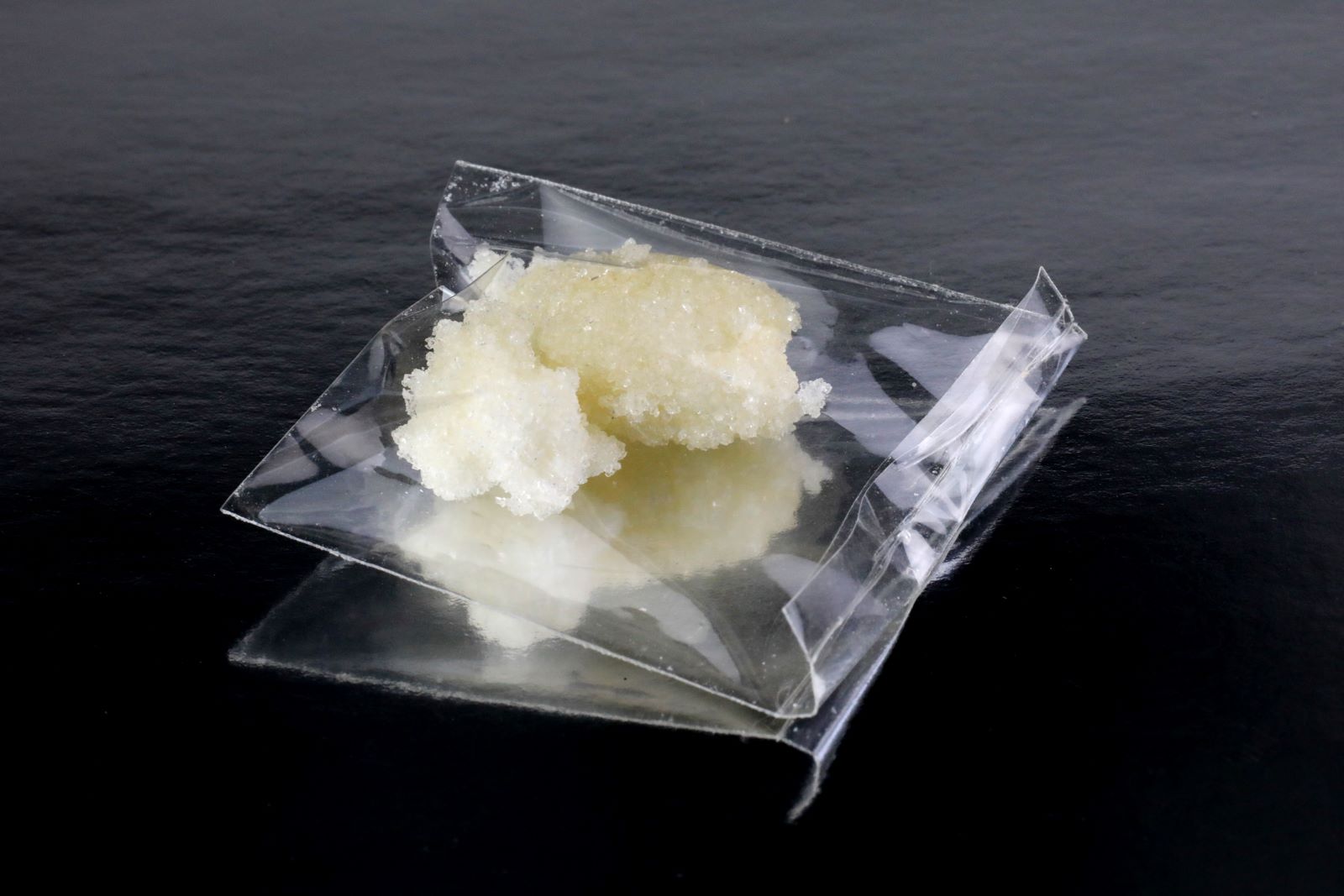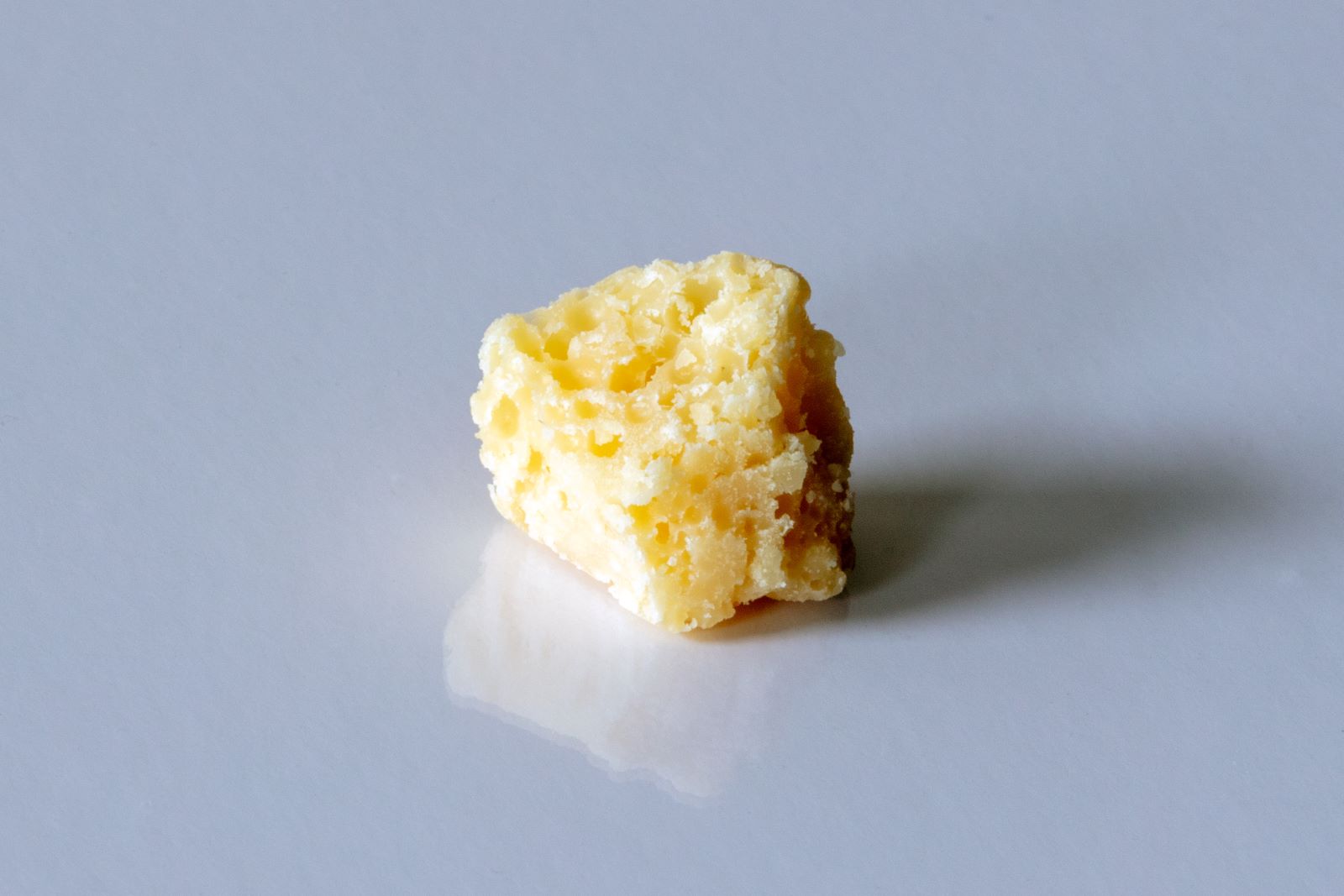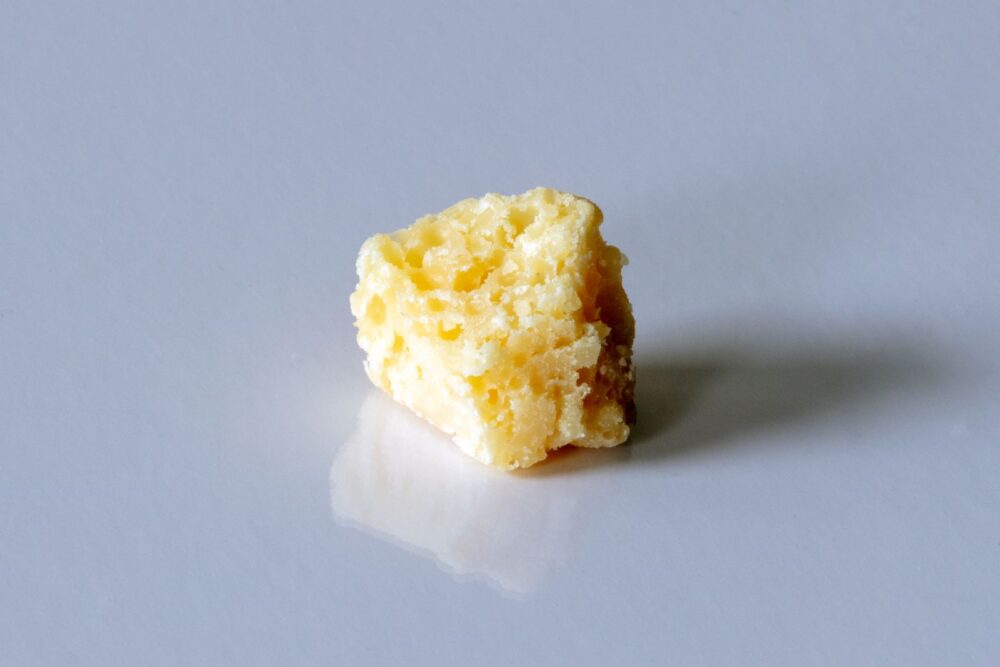Table of Contents
- Crack and Crack Cocaine Drug Facts
- What Does Crack Look Like?
- What Does Cocaine Look Like?
- Identifying Crack Cocaine Paraphernalia
- Signs And Symptoms of Crack Use
- Treatment For Crack Cocaine Addiction
- FAQs Related To Crack
- Get Freedom From Substance Addiction. Contact A Safe And Supportive Recovery Center Today.
- Sources
Crack cocaine is a fairly common illicit drug in the United States. But what does crack look like, exactly? It looks like small, white, or off-white rocks but can have other color hues based on the cutting agent(s) or additive(s) used in its manufacture.
Crack and Crack Cocaine Drug Facts
Cocaine, a stimulant drug, is produced in northern South America, specifically Bolivia, Colombia, and Peru. Producers send native coca leaves through chemical processes to manufacture the two main forms of cocaine, powder or rocks. Both forms are known for the resulting intense high and increased dopamine levels.
Dopamine is a natural chemical messenger between nerve cells and relates to movement and reward control in the brain. It normally cycles back into the releasing nerve cell and shuts off the signal between the cells. But, cocaine stops dopamine from recycling and floods the reward circuit instead. Your reward circuit becomes less sensitive over time, causing them to seek a higher dose more often to feel the same effect and find relief from a withdrawal.[1]
It’s a Schedule II drug in the United States, meaning it has a high potential for abuse but is administered in certain medical situations by a trained medical provider.
Crack Addiction Statistics
- 6,222,000: U.S. residents 12 years and older who use crack cocaine at least once in their lifetime.[2]
- 1.3 million: People 12 years and older with cocaine addiction in the 12 months preceding 2020.[3]
- 68% to 84%: People using cocaine who experience paranoia and other mental health effects.[4]
What Does Crack Look Like?
Most people associate how crack cocaine looks with small rocks, but it may also look like soap shavings. Derived from the coca plant and created with cocaine hydrochloride, crack is usually mixed with baking soda and water. When heated, the compound is blended with a solid substance and will separate. After drying, it’s broken into smaller pieces or rocks.[5]
Crack’s color can be off-white, pink, or have a brown or yellow shade depending on the cutting agent used, though white and off-white are the most common colors.
How Crack Smells
How crack smells can depend on the person, but two common and noted odors are either bitter or chemical. The chemical can be traced to the additives or cutting agents used in its production. Other smells include burning plastic or rubber; gasoline; skunky; or a nail salon.
How Crack Feels
Crack rocks are hard to the touch, with a range of textures from rough to porcelain.
How Crack Is Used
Smoking crack is the only way to use or ingest the rocks. You feel the effects quickly, usually in under a minute, as the bloodstream absorbs up to 60% of the crack cocaine within 19 seconds.[1] Yet, the intensity is shorter in duration, causing you to seek more crack to maintain the effects.
What Does Cocaine Look Like?
Cocaine looks different than crack rocks, with its appearance dependent on any additives used. The pure form — a fine, white cocaine powder — is frequently diluted or cut with cornstarch, sugar, or synthetic substances such as fentanyl. The white powder may have an off-white coloration depending on the additive.
How Cocaine Smells
Pure powder cocaine may have a faint floral smell, a remnant from the coca leaves themselves. But if the powder has any additives, it usually takes on a smell from those, such as ammonia or baking soda.
How Cocaine Feels
Powder cocaine numbs your mouth, throat, and tongue since it’s a local anesthetic. You may also experience a burning sensation inside your nasal sinuses before those areas numb.
How Cocaine Is Used
Snorting is the main way to ingest white powder cocaine, though it can also be dissolved with a liquid and then injected via a needle. Freebasing is the term given to smoking powdered cocaine.
Identifying Crack Cocaine Paraphernalia
Using crack cocaine often requires a considerable amount of equipment or paraphernalia to heat and smoke the rocks. These may be similar to marijuana paraphernalia and include
- Bongs or water pipes;
- Glass or ice pipes;
- Lighters, including cigarette and grill styles;
- Metal spoons;
- Straws; and/or
- Empty household items, such as beer or soda cans.
Signs And Symptoms of Crack Use
The signs of crack use can vary between people, but they usually exhibit:
- Cravings or a need for more crack;
- Increased hyperactivity;
- Lack of concentration or focus;
- Sudden agitation; and/or
- Sudden nosebleeds or runny nose.
Other signs can include sudden criminal activity or financial difficulties, loss of interest in regular activities, and struggles with school or work responsibilities.
Side Effects of Crack Cocaine Use
Crack cocaine use comes with a long list of side effects, whether you’ve used the substance once or have an addiction. Regardless of your length of use, it can cause cardiac arrest, a stroke, or death at any time.
Short-Term Side Effects of Crack Cocaine Use
The side effects can vary from person to person but occur quickly and then disappear within a few minutes to one hour. The intensity of the high is greater when using crack cocaine because of how it enters the bloodstream almost instantaneously. Short-term physiological effects include:
- Constricted blood vessels;
- Decreased appetite;
- Dilated pupils;
- Increased blood pressure, body temperature, and heart rate;
- Feelings of euphoria, energy, and mental alertness; and
- Hypersensitivity to sight, sound, and touch.
Long-Term Side Effects of Crack Cocaine Use
Long-term use of crack cocaine use causes a range of side effects, including
- Lung damage, including asthma and lung infections from bronchitis and pneumonia;
- Tears and ulcers in the gastrointestinal tract caused by constricted blood vessels;
- Delirium or psychosis, leading to confusion, hallucinations, and panic attacks; and
- Oral and dental issues, such as oral sores, tooth decay, and tooth grinding.
Crack Withdrawal Symptoms
Crack withdrawal generally happens in stages, with the first stage highlighted by physical symptoms. The second or subsequent stage features more psychological symptoms.
Acute Withdrawal Symptoms
As your body processes the remaining amount of crack cocaine, you’ll begin to experience acute withdrawal symptoms, such as irritability, hunger, and tiredness. Within a week, usually five to seven days, your body begins adjusting to the lack of crack, and acute symptoms begin to disappear.
Psychological Withdrawal Symptoms
As a stimulant directly affecting the reward center of your brain, crack cocaine use causes major changes to your brain chemistry. It can’t change again overnight, which produces psychological withdrawal symptoms such as anxiety, depression, and sometimes suicidal thoughts.
Identifying Crack Overdose
Crack cocaine often features several internal and external symptoms along with normal side effects, such as:
- Clumsiness;
- Depressed breathing;
- Excessive itching throughout the body;
- Irregular heartbeat or rhythm;
- Seizures or stroke; and
- Coma.
Call 911 immediately if you or someone else is having an overdose, and let the emergency responders know it’s a crack cocaine overdose. This information helps them properly assess and treat the person before transporting them to a hospital. If you take the person to a hospital emergency room yourself, again, let the medical personnel know what drug the person was using.
Treatment For Crack Cocaine Addiction
Today, people have several treatment options for crack cocaine addiction, such as detox and inpatient and outpatient treatment programs. The length of these programs depends on a number of factors, such as addiction severity and the specific treatment option.
Detox
Detox is the first step taken in a treatment center as you quit any use of crack cocaine. Your body begins to experience withdrawal symptoms within a few hours of beginning detoxification. Withdrawal symptoms can come in a range of severity but often resolve or go away after a week. They can include:
- Anxiety and panic attacks;
- Appetite rebound;
- Fatigue or exhaustion;
- Intense agitation; and/or
- Robust crack cravings.
Inpatient Treatment Programs
Inpatient programs are designed for people with a severe crack cocaine addiction who need around-the-clock supervision to maintain the treatment program. The curriculum for inpatient treatment can vary by facility but often feature one-on-one therapy with trained counselors and group activities with other patients.
Outpatient Treatment Programs
Outpatient programs are the type used by most people who use crack cocaine. These programs allow you to continue attending school or working but hold periodic, often weekly, therapy sessions. These sessions may be one-on-one with a counselor or in a group setting.
FAQs Related To Crack
What is the color of crack?
Crack cocaine usually is white or off-white in color but can have a yellow or brown tint. The tint is usually caused by the cutting agent used in its manufacturing process.
Is crack a powder or a liquid?
It’s both yet neither. Crack cocaine is the result of raw cocaine hydrochloride dissolved in a baking soda and water mixture. When the mixture is heated, an oily substance forms from the cocaine. This substance hardens to nearly rock-like when cooled; producers then break the hardened substance into smaller pieces for sale and distribution.
What is a type of drug that is found in a variety of colors?
Methamphetamine (meth) can come in a variety of colors, including clear, white, yellow, purple, pink, and blue. The color is usually based on the form or alteration of meth, such as liquid or crystal.
Get Freedom From Substance Addiction. Contact A Safe And Supportive Recovery Center Today.
Crack cocaine use affects you and those around you, from family members to coworkers. At Infinite Recovery, we provide the compassion and support so many seek on their journey against addiction in our treatment center. If you or a loved one is suffering from cocaine addiction, contact us today to discuss treatment options.
Sources
[1] NIDA. 2021, April 8. Cocaine DrugFacts. Retrieved from https://nida.nih.gov/publications/drugfacts/cocaine on 2023, January 4
[2] National Drug Intelligence Center & U.S. Department of Justice. (n.d.). Crack Cocaine Fast Facts – Questions and Answers. Retrieved from https://www.justice.gov/archive/ndic/pubs3/3978/index.htm on 2023, January 5
[3] NIDA. 2022, December 21. What is the scope of cocaine use in the United States? Retrieved from https://nida.nih.gov/publications/research-reports/cocaine/what-scope-cocaine-use-in-united-states on 2023, January 5
[4] Morton, W. A. National Library of Medicine. 1999. Cocaine and psychiatric symptoms. Retrieved from https://pubmed.ncbi.nlm.nih.gov/15014683/ on 2023, January 5
[5] Murphy, D. E., Castillo, R., Sessions, W. K., Steer, J. R., Johnson, S., & Kendall, J. 2002, May. Forms of cocaine, methods of use, effects, and dependency. Retrieved from https://www.ussc.gov/sites/default/files/pdf/news/congressional-testimony-and-reports/drug-topics/200205-rtc-cocaine-sentencing-policy/ch2.pdf on 2023, January 5


















